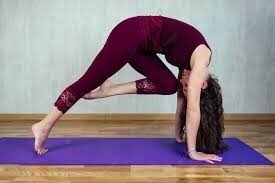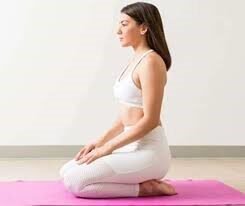Yoga, revered as a profound mind-body practice, has transcended centuries, captivating countless enthusiasts worldwide. Beyond mere physical exercise, yoga encompasses a holistic approach to well-being, fostering strength, flexibility, and inner peace. In this comprehensive guide, we delve into the origins, philosophy, diverse types, and myriad benefits of yoga, shedding light on its transformative power.
What is Yoga? Yoga, rooted in ancient tradition, intertwines physical postures, mindful concentration, and controlled breathing techniques. Embraced by millions globally, yoga serves as a pathway to enhance endurance, tranquility, flexibility, and overall vitality. Evolving from its origins in India, yoga has become a ubiquitous practice, resonating with individuals seeking harmony between body and mind.

History: Tracing its origins back over 5,000 years to the ancient texts of Rig Veda, yoga embodies the Sanskrit word “yuj,” signifying union or harmony. From its humble beginnings in Northern India to its modern-day resurgence, yoga’s journey has been one of dissemination and adaptation. Influencing Western societies from the late 19th century, yoga’s popularity burgeoned, transcending cultural boundaries to become a global phenomenon.
Philosophy: At its core, yoga espouses the integration of mind, body, and spirit, epitomizing a holistic approach to existence. Embodied within six branches, each with its unique focus, yoga embraces diverse pathways to enlightenment:
- Hatha Yoga: Balancing physicality and mentality.
- Raja Yoga: Nurturing meditation and spiritual discipline.
- Karma Yoga: Fostering selfless service and positivity.
- Bhakti Yoga: Cultivating devotion and emotional balance.
- Jnana Yoga: Pursuing wisdom and intellectual growth.
- Tantra Yoga: Engaging in ritual and holistic connection.
Chakras: Central to yogic philosophy are the chakras, energy centers believed to regulate various aspects of human experience. From the crown chakra symbolizing spiritual connectivity to the root chakra anchoring us to the earth, each chakra governs distinct facets of our being. Through yoga practice, individuals seek to harmonize these energy centers, promoting holistic well-being and alignment.
Types: Diverse styles of yoga cater to practitioners of all levels, preferences, and intentions:
- Ashtanga Yoga: Dynamic sequences synchronized with breath.
- Bikram Yoga: Intense practice in heated environments.
- Hatha Yoga: Gentle introduction to foundational poses.
- Iyengar Yoga: Emphasis on precise alignment with props.
- Kundalini Yoga: Awakening inner energy through meditation.
- Power Yoga: Vigorous and athletic approach to traditional poses.
- Sivananda Yoga: Integrating holistic lifestyle principles.
- Viniyoga: Tailored practice emphasizing breath and adaptation.
- Yin Yoga: Deep, passive poses targeting connective tissues.
- Prenatal Yoga: Gentle practice catering to expectant mothers.
- Restorative Yoga: Relaxing, prop-supported postures for deep relaxation.
Benefits: The benefits of yoga extend far beyond the physical realm, encompassing mental, emotional, and spiritual well-being. From enhancing muscular strength and flexibility to alleviating stress, anxiety, and chronic pain, yoga nurtures a profound sense of balance and vitality. Moreover, yoga fosters heart health, promotes better sleep, and cultivates an overall sense of peace and contentment.
Transformative Benefits of Yoga:
Yoga, revered for centuries as a profound practice for holistic well-being, offers an array of transformative benefits that extend far beyond the physical realm. Embraced by millions worldwide, yoga serves as a pathway to cultivate inner peace, vitality, and harmony between mind, body, and spirit. Let’s delve into the myriad benefits of yoga:
1. Enhances Flexibility and Strength: Through a series of dynamic poses and stretches, yoga promotes flexibility by lengthening and elongating muscles. Additionally, holding poses builds muscular strength, contributing to overall physical resilience and endurance.
2. Promotes Stress Reduction: One of the most cherished benefits of yoga is its ability to alleviate stress and promote relaxation. Mindful breathing techniques and meditation practiced during yoga sessions activate the body’s relaxation response, reducing levels of cortisol and inducing a state of tranquility.
3. Improves Mental Clarity and Focus: Yoga encourages mindful concentration and presence in the moment, fostering mental clarity and heightened awareness. Regular practice enhances cognitive function, memory retention, and the ability to maintain focus amidst distractions.
4. Cultivates Emotional Balance: By fostering self-awareness and introspection, yoga empowers individuals to navigate their emotions with equanimity and compassion. The practice of yoga encourages acceptance of oneself and others, fostering emotional resilience and a greater sense of inner peace.
5. Enhances Respiratory Function: Yogic breathing techniques, or pranayama, emphasize deep, diaphragmatic breathing patterns that optimize lung capacity and oxygenation of the body. This enhances respiratory function, boosts energy levels, and promotes overall vitality.
6. Supports Cardiovascular Health: Certain styles of yoga, such as vinyasa or power yoga, incorporate dynamic sequences that elevate heart rate and promote cardiovascular health. Regular practice improves circulation, lowers blood pressure, and reduces the risk of heart disease.
7. Alleviates Chronic Pain: Yoga serves as a therapeutic modality for managing chronic pain conditions, such as back pain, arthritis, and migraines. Gentle stretches, mindful movement, and relaxation techniques alleviate muscular tension, enhance mobility, and promote pain relief.
8. Boosts Immune Function: The holistic nature of yoga, encompassing physical movement, breathwork, and meditation, enhances immune function by reducing inflammation, modulating stress hormones, and promoting overall well-being. A strong immune system defends against infections and promotes optimal health.
9. Fosters Mind-Body Connection: Yoga fosters a profound connection between mind and body, encouraging individuals to tune into bodily sensations, emotions, and energetic flow. This heightened awareness cultivates a deeper sense of self-understanding and promotes holistic healing.
10. Enhances Quality of Sleep: Regular practice of yoga promotes restful sleep by reducing stress, calming the nervous system, and promoting relaxation. Incorporating gentle yoga sequences or relaxation techniques before bedtime can facilitate a peaceful transition into sleep and improve sleep quality.
Risks and Side Effects: While yoga generally poses minimal risk when practiced under guidance, certain precautions are warranted, especially for individuals with underlying health conditions. Pregnant individuals or those with medical concerns such as bone loss or glaucoma should seek professional advice before embarking on a yoga journey. Moreover, beginners should approach advanced poses with caution and refrain from pushing beyond their limits to prevent injury.
Frequently Asked Questions (FAQs) About Yoga
1. What is yoga, and what does it involve?
- Yoga is a holistic practice that combines physical postures (asanas), breathing exercises (pranayama), meditation, and relaxation techniques. It aims to integrate the body, mind, and spirit for overall well-being.
2. What are the benefits of practicing yoga?
- Yoga offers a wide range of benefits, including improved flexibility, strength, and balance, reduced stress and anxiety, enhanced mental clarity and focus, better sleep quality, and increased overall physical and mental well-being.
3. Can anyone do yoga, regardless of age or fitness level?
- Yes, yoga is accessible to people of all ages and fitness levels. There are various styles and levels of yoga classes available, making it adaptable for every person.
4. How often should I practice yoga to see results?
- Consistency is key to experiencing the benefits of yoga. Aim to practice yoga at least 2-3 times per week to see noticeable improvements in flexibility, strength, and stress reduction. However, even practicing for a few minutes daily can yield positive results.
5. Do I need to be flexible to do yoga?
- No, you do not need to be flexible to start practicing yoga. Flexibility is a result of regular yoga practice, not a prerequisite. Yoga classes often include modifications and props to accommodate practitioners of all levels of flexibility.
6. Can yoga help with weight loss?
- While yoga alone may not lead to significant weight loss compared to more vigorous forms of exercise, it can complement a healthy lifestyle by promoting mindfulness, stress reduction, and mindful eating habits, which may indirectly support weight management.
7. Are there specific types of yoga for different goals?
- Yes, there are various styles of yoga, each with its focus and benefits. For example, Ashtanga or Power Yoga may be more physically demanding and suitable for those seeking to build strength and stamina, while Yin Yoga or Restorative Yoga may be better for stress relief and relaxation.
8. Can yoga help alleviate chronic pain or medical conditions?
- Yoga has been shown to offer relief from chronic pain conditions such as lower back pain, arthritis, and migraines. However, individuals with specific medical concerns should consult with their healthcare provider before beginning a yoga practice to ensure it is safe and appropriate for their condition.
9. Is yoga a religious practice?
- While yoga has its roots in ancient spiritual traditions, modern yoga is often practiced in a secular context focused on physical and mental well-being. Many people of various religious backgrounds practice yoga without any conflict with their beliefs.
10. What should I expect in my first yoga class?
- In your first yoga class, expect to be introduced to basic yoga poses, breathing techniques, and relaxation exercises. The instructor will guide you through the practice, offering modifications and adjustments as needed. Remember to listen to your body and honor your limits while exploring the practice.
Most Recommended Yoga Poses
Yoga poses, also known as “asanas,” offer a multitude of benefits for the body, mind, and spirit. Here are some of the most recommended yoga poses that are commonly practiced and favored by yogis worldwide:
- Mountain Pose (Tadasana): This foundational pose helps improve posture, balance, and concentration while promoting a sense of grounding and stability.
- Downward-Facing Dog (Adho Mukha Svanasana): A staple in many yoga sequences, Downward Dog stretches the entire body, strengthens the arms and legs, and energizes the mind.
- Warrior Pose (Virabhadrasana): Warrior I, II, and III poses build strength, stamina, and confidence while enhancing focus and determination.
- Tree Pose (Vrksasana): This balancing pose improves concentration, strengthens the legs and core muscles, and cultivates a sense of rootedness and inner peace.
- Child’s Pose (Balasana): A soothing and restorative pose, Child’s Pose gently stretches the spine, hips, and thighs while promoting relaxation and stress relief.
- Cobra Pose (Bhujangasana): Cobra Pose helps to open the chest, strengthen the back muscles, and improve spinal flexibility, relieving tension and fatigue.
- Seated Forward Bend (Paschimottanasana): This seated stretch targets the hamstrings, lower back, and spine, promoting relaxation, calmness, and introspection.
- Bridge Pose (Setu Bandhasana): Bridge Pose strengthens the back, glutes, and hamstrings, while also stretching the chest and shoulders, alleviating back pain and fatigue.
- Corpse Pose (Savasana): The final relaxation pose in yoga practice, Savasana allows for complete surrender and relaxation, promoting deep rest, rejuvenation, and integration of the practice.
- Cat-Cow Pose (Marjaryasana-Bitilasana): This gentle flowing sequence improves spinal flexibility, massages the spine and internal organs, and promotes emotional balance and harmony.
These are just a few of the many yoga poses available to explore and incorporate into your practice. Remember to listen to your body, honor your limits, and practice with mindfulness and intention for maximum benefit.
Summary: Yoga, with its rich history, profound philosophy, and myriad styles, stands as a beacon of holistic wellness in an ever-changing world. From its ancient roots to its modern-day adaptations, yoga continues to empower individuals on their journey towards self-discovery and well-being. As practitioners embrace the transformative power of yoga, they embark on a path of inner harmony, physical vitality, and spiritual enlightenment. Yog offers a holistic approach to well-being, encompassing physical, mental, emotional, and spiritual dimensions of health. By embracing the transformative benefits of yoga, individuals embark on a journey of self-discovery, vitality, and inner peace. Whether practiced on the mat or integrated into daily life, yoga serves as a timeless tool for nurturing holistic wellness and enhancing quality of life.
Thanks for visiting Gymbag4u.com
You may also love reading our following articles. A Comprehensive Guide to the Transformative World of Yoga – GymBag4U and Weight Loss Yoga: A Complete Guide – GymBag4U and Top 8 yoga poses for good hair growth – GymBag4U and Yoga Poses for Beginners: Savasana, Padmasana, Vrikshasana, Tadasana, Trikon asana (gymbag4u.com)
